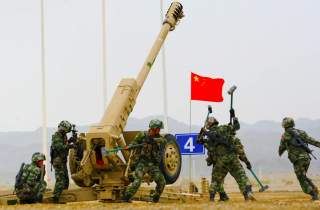Here Is How America Can Increase the Pressure on China
A new maritime pressure strategy.
Coordination
Deepen cooperation with Indo-Pacific allies and partners. Allies and partners will be critical in a Maritime Pressure strategy, both in terms of accessing their territory and the capabilities and forces they contribute. The U.S. military should engage closely with Indo-Pacific allies and partners to form enhanced access agreements for both peacetime and war, as well as gain a better understanding of what roles each ally and partner may be willing to perform and with what forces in each potential contingency. The U.S. military should also work to deepen interoperability and developed combined concepts of operations among U.S. and allied and partner forces, particularly with Japan and Australia.
Reexamine Service roles and missions. As new concepts for warfighting in the Western Pacific continue to mature, so too should existing Service roles and missions. For example, Inside-Out Defense envisions both Army and Marine forces playing a larger role in anti-surface warfare missions. But key questions remain, such as whether they would provide similar or distinct capabilities for those missions and whether they would perform the missions in separate or overlapping geographic areas. Answering questions like these will help harmonize ongoing efforts to develop new concepts and capabilities across the services.
Consequences
Attempting to overcome these American A2/AD investments will likely push China toward prioritizing short-range counter-A2/AD improvements over long-range power projection investments. Such an outcome would appeal to the United States and its allies since it would keep China ensnared in its maritime backyard within the First Island Chain. Alternatively, China might view popping the American A2/AD bubble as too risky and expensive and, as a result, shift attention and resources away from its eastern maritime frontier to its western land frontier. President Xi Jinping has increased Chinese involvement in continental Asia through his Belt and Road Initiative, so Maritime Pressure might reinforce an existing preference within the Chinese government for westward expansion. On the negative side, Maritime Pressure might encourage China to escalate horizontally by shifting the competition to other domains, including the economic or diplomatic spheres. Despite this risk, a Maritime Pressure strategy represents a feasible, affordable, and sophisticated approach for responding to China’s rise in the years ahead.
Peter Kouretsos is an Analyst at the Center for Strategic and Budgetary Assessments. He is the co-author, with Thomas G. Mahnken, Travis Sharp, and Billy Fabian, of Tightening the Chain: Implementing a Strategy of Maritime Pressure in the Western Pacific.
This originally appeared on CIMSEC in 2019. Image: Reuters

